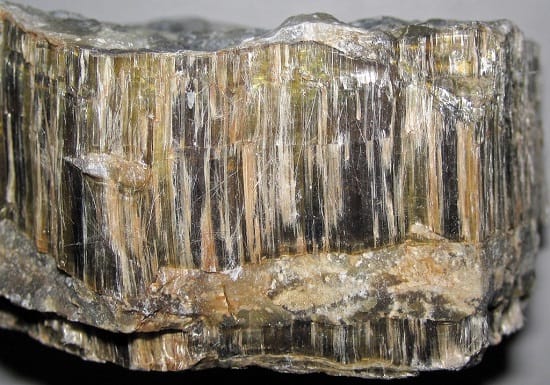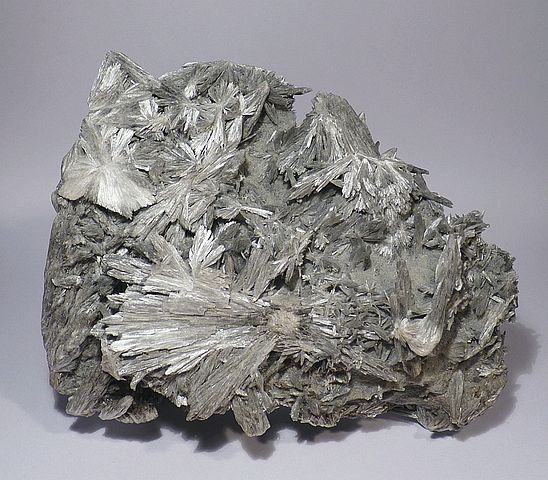The Main Types of Asbestos in the UK
There are many asbestos types currently hidden in buildings and products throughout the UK. Here at Safeline Environmental, we have worked with a massive variety of types of asbestos, this is the topic of our latest article.
Common asbestos types in the UK
Asbestos is not one material per se, the term Asbestos is coined for a group of materials all derived from silicate material with naturally occurring long fibres. These fibres have several properties which made them desirable as a building material in the 1950s, the main ones being their resistance to heat, fire, and environmental degradation, which make them the perfect building material, but the double edge of the sword of those properties is their inherent danger to health.
Asbestos was banned as a building material finally in the United Kingdom in 1999, with a partial or initial ban being introduced in 1985. 1950 to 1999 is a huge span of time when a massive amount of rebuilding and construction took place in the UK. This span of asbestos use has left a huge legacy of unmapped and unquantified toxic material in the public domain, which is not envisioned to be removed in the next 50 years.
At Safeline, we are looking to make sure that the public is aware of the potential dangers of all types of Asbestos, and with this, in mind, we have listed the groups of the materials used that make up the asbestos group.
Asbestos has two main groups
Asbestos falls into two main groups.
- Serpentine Asbestos– This is known as white asbestos, derived from magnesium silicate, which produces soft and weavable fibres which made this material the most effective material for manufacture and therefore make this group of “Chrysotile” asbestos the most commonly used in the United Kingdom.

A chrysotile rock formation, serpentine asbestos is harvested from this
- Amphibole asbestos– This larger group includes numerous asbestos types including tremolite, crocidolite, amosite, anthophyllite and actinolite. Amphibole asbestos fibres are derived from silicates of magnesium, iron, calcium, and sodium. Fibres are not as flexible as the magnesium silicate type as found in serpentine types and are brittle with a rod- or needle-shaped structure. Amphibole is more heat and chemical resistant than serpentine fibres.
- Crocidolite is known as blue asbestos; this is a sodium iron silicate. Crocidolite fibre is relatively flexible, has poor heat resistance, but is highly resistant to acid.
- Amosite is often referred to as brown asbestos and is made up of iron magnesium silicate, The fibres are usually yellow-grey to dark brown and are very coarse.
- Anthophyllite is another fibrous form of iron magnesium silicate, again the fibres are grey or brown-grey similar to amosite but with little to no commercial value.
- Tremolite is a calcium magnesium silicate with a grey-white, yellow, and green colour to it. It is found as a contaminant with other fibres such as chrysotile and has no industrial applications.
- Actinolite asbestos occurs as a contaminant of both chrysotile and talc deposits.

Natural tremolite ore viewed close up
Rules when working with asbestos
The general rule to spot these forms of asbestos is to look for colour and texture. DO NOT REMOVE ANY SUSPECTED ASBESTOS MATERIAL YOURSELF! If you suspect that your property contains asbestos (if built between 1945 to 1999 it will do) then call Safeline for a second opinion and a range of removal options.
Contacting Safeline Environmental
For advice about asbestos types and our range of domestic and commercial asbestos removal services contact Safeline Environmental. We work UK-wide and have massive experience in managing all types of asbestos, contact us in the following ways:
- Telephone - 01299 251083
- Email - info@safeline-env.co.uk
- Contact Form - click https://www.safeline-environmental.co.uk/contact/
Image Credits: James St. John and Wikipedia
3 Comments
Leave a Comment
You must be logged in to post a comment.


[…] asbestos types of minerals have a similar characteristic; they are odourless and tasteless. When this material is […]
[…] will collect and remove any asbestos waste you may have at your premises; this includes asbestos types of serpentine and amphibole as well as cement-based and fibrous asbestos. We are accredited upper […]
[…] more was learned about its dangers before it was finally banned as a construction material. Three main types of asbestos were typically used to produce garage rooves in the past, and these were crocidolite, amosite, and […]